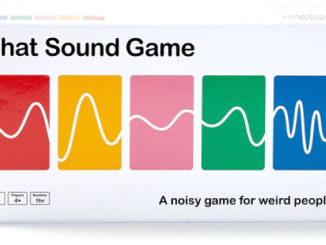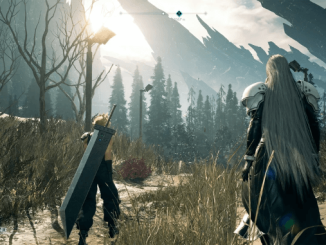Our review of Ghost of Yōtei, developed by Sucker Punch. Available now for PS5 (reviewed).
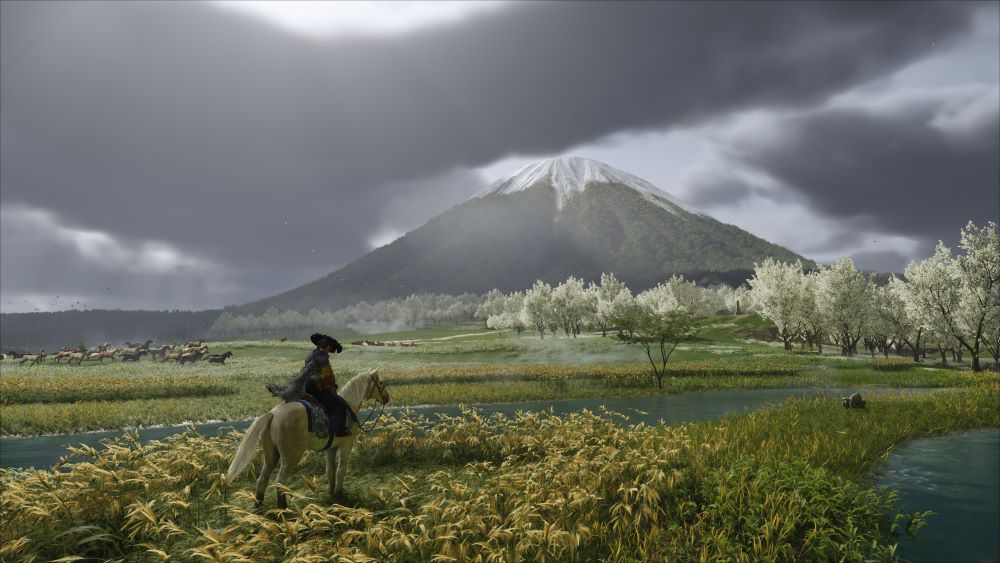
WHAT IS IT?
A sequel to PS4 insta-classic Ghost of Tsushima.
IS IT GOOD?
It is exactly what you expect it to be – no more, no less.
WHO SHOULD PLAY IT?
The ghost of Jin Sakai.
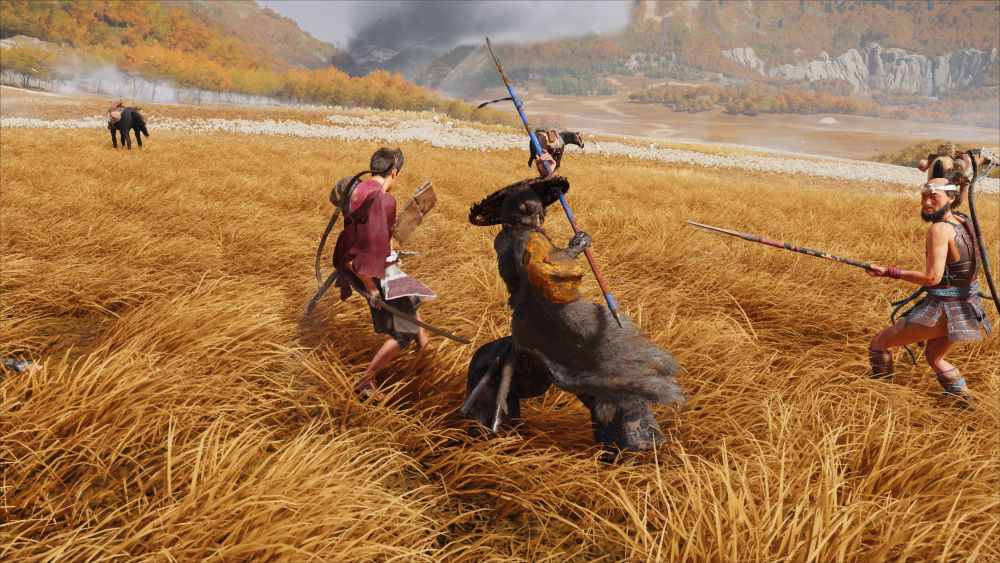
LONE WOLF
I’m far from the first critic to observe that 2025 has seen a glut of great games. And not just any games, but big, meaty, epics designed to consume dozens upon dozens of hours apiece, with gamers likely playing catch-up for years to come. Heading into the end of the year, serious GOTY contenders range from mythmaking Euro-RPGs to dizzyingly expansive monster hunts to games about walking really long distances, really slowly, carrying really heavy packages.
Into the fray enters Ghost of Yōtei, sequel to the last of the great PS4 games, which in 2020 I called the most photorealistic video game I’ve ever played. When Ghost of Tsushima moved to PS5 in an expanded Director’s Cut a year later, I called it truly one of the great PlayStation games of all time, only bigger and better.
Its full-blown sequel is a fine successor to Tsushima, iterating on what that game did well, and wisely moving the story forward into a new era with new characters, developer Sucker Punch evidently deciding to give Tsushima protagonist Jin Sakai his well-deserved rest. (At least for now – as we know from gaming and pop culture in general, there’s always a sequel or reboot waiting around the corner.)
But Yōtei only iterates, as opposed to evolves. And for the same reasons I criticized this year’s Tsushima-inflected Assassin’s Creed Shadows and the similarly iterative God of War Ragnarök, there’s something disappointing in the way Yōtei plays it so safe.
The world looks beautiful. Check.
There are hot springs to bathe in and bamboo stalks to strike. Check.
The swordplay is fun and the stealth mechanics exemplary. Check and check.
But with a few exceptions – a wolf team-up mechanic, some fun new side activities, like painting a sumi-e illustration on the DualSense touchpad – it’s largely the same game as before, only prettier. It’s not a major leap forward, and it’s unlikely to be remembered in the same way as, say, the highly experimental Metal Gear Solid 2: Sons of Liberty or the open world masterpiece Red Dead Redemption 2.
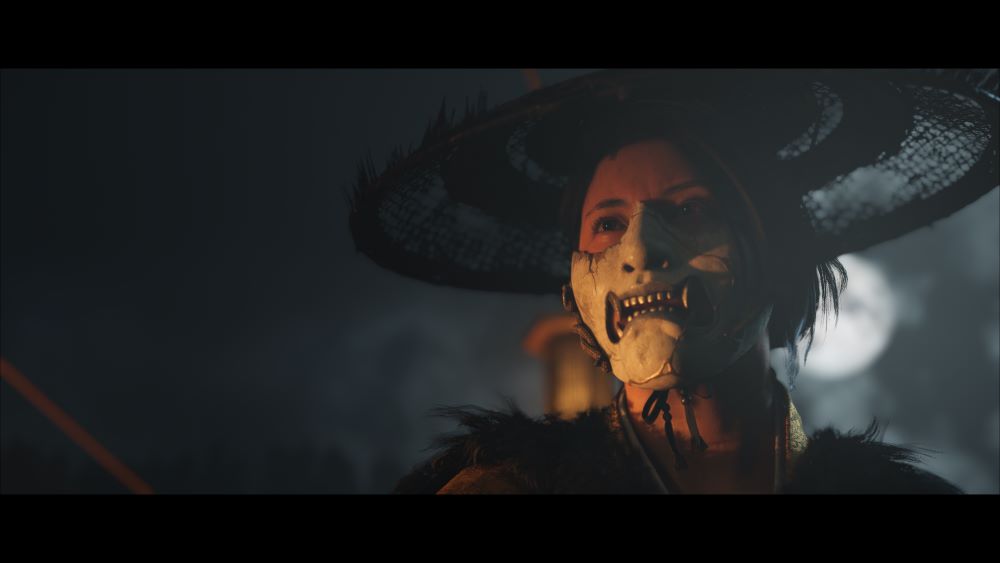
LONE WOLVES
Ghost of Yōtei has one other problem, and as much as I would like not to belabour this, we should start here: Assassin’s Creed Shadows already exists.
Earlier this year, the much-maligned Ubisoft surprised everyone by releasing a critically acclaimed, endlessly enjoyable, open world stealth/action hybrid set in Japan in the years slightly preceding the events of Tsushima. While the graphics (inferior even to the PS4 Tsushima) and gameplay couldn’t really compete with its most obvious antecedent, Shadows benefitted enormously from its real-world setting, Ubisoft creating a digital simulacrum of 16th-century Japan, replete with authentic versions of Osaka Castle, a sparklingly newly built Kyoto Golden Pavilion, and more. As an exercise in virtual tourism, Shadows, like most of the Assassin’s Creed games, was exemplary.
But Shadows also suffered from a fairly rote plot, with its lone wolf female protagonist wreaking vengeance against a mask-clad cabal of villains responsible for murdering her family – which, hey, is the exact same plot as Ghost of Yōtei.
Frankly, I blame both games for this. If you needed any further proof that Western developers lack imagination when telling stories outside their immediate experience, look no further than the fact that these two unrelated studios, taking it upon themselves to tell samurai-adjacent stories, came up with the same cliché-ridden, overly simplistic take on the genre.
There’s a bitter irony to all this, Yōtei dev Sucker Punch (and Ubisoft for that matter) proclaiming their affection for Japanese cinema, even as the end product resembles something hacked together by someone who’s only seen the trailers, bought the cool t-shirt.
Had Sucker Punch paid more attention during their purported Kurosawa marathons (or had they bothered to check out Kobayashi and Mizoguchi, for that matter), they would have learned that these samurai stories have a depth – and even an ironic strain of anti-violence in them – largely absent from the games designed to evoke them. This isn’t a debilitating failing – Yōtei is, after all, a helluva good time – but it’s a lesser experience than what we were promised.
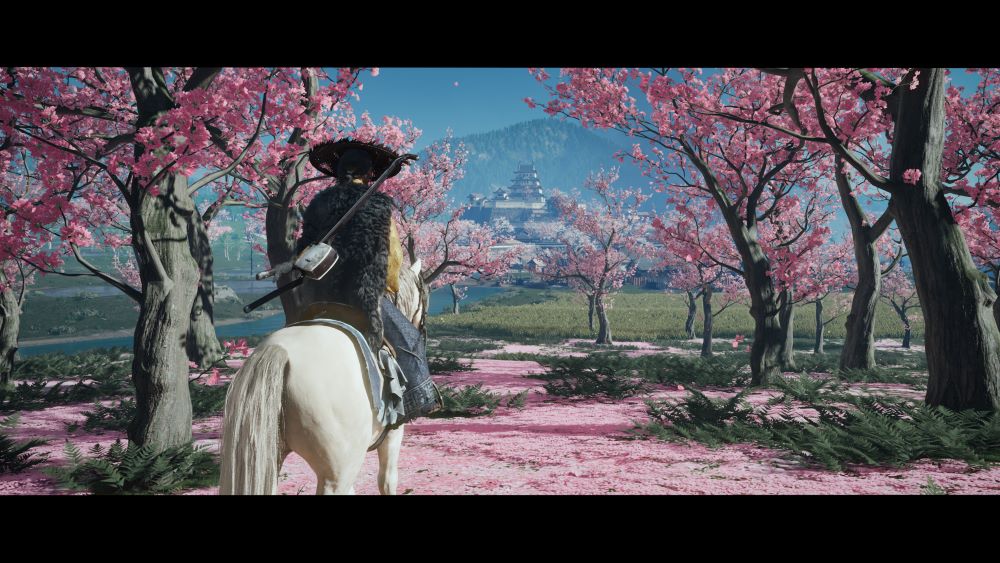
CUB
Picking up three centuries after the events of Tsushima, Ghost of Yōtei stars Atsu, a female mercenary (yes, sigh, they existed, go back to your caves, MAGAheads) who has sworn vengeance against the evil samurai Lord Saitō and his mask-wearing minions, i.e., minibosses, with awesome codenames like The Snake, The Spider, The Fox. (And yes, some of these names are repeated from AC Shadows as well.)
Unlike Tsushima’s Sakai or even AC Shadows’s Fujibayashi Naoe, Atsu is a cold-blooded mercenary, not tied to any particular honour code or allegiance. Styling herself as a dreaded onryō, or vengeful spirit, Atsu’s one and only goal is to take down her family’s killers, steamrolling anyone who gets in her way.
This setup gives Yōtei a propulsiveness which, while welcome, is often at odds with its gameplay, as Atsu (the player) regularly gets distracted by sidequests and quieter moments of contemplation which, while lovely, don’t really jibe with the notion she’s on an urgent quest to murder her enemies. Yōtei is hardly the first game to suffer from sidequest bloat, but it’s particularly noticeable here, actively undermining the story which Sucker Punch asks us to buy into. It’s a funny thing, too, because a lot of these sidequests are great, and occasionally more in keeping with classic Japanese cinema than the main story threads; it’s just that they don’t mesh well with the overarching story of revenge. (Incidentally, for a great revenge story, check out Masaki Kobayashi’s masterful Harakiri, probably the best film about vengeance ever made.)
Moment to moment, no surprise here, Yōtei is phenomenally entertaining. It’s gorgeous, of course, and the near-absence of a HUD allows you to really bask in its visuals – though the on-screen wind effect is a bit over-the-top, constantly blowing even during the quietest cutscenes. The deeply adjustable difficulty is a nice touch, allowing you to tweak any and every aspect (including the trickier challenges like the “Bamboo Strikes” button presses). The missions – ranging from bog-standard camp liberation to exciting, multi-part castle infiltrations – are fun, encouraging you to make full use of its new combat options, including a bevy of new weapons that you can hotswap between with a button press. The presence of a new wolf companion – not quite a pet, more of a wild animal that occasionally deigns to team up with you – is also very, very cool.
But, as mentioned, Yōtei is imperfect, sometimes in strange ways.
The subtitles are just awful; hard to read (no attempt has been made to ensure they’re legible against lighter backgrounds), and the only option is full closed-captioning, with descriptors like “[amused grunt]” or “[drunken laughter]”. It’s wild that, in a game seeking to emulate classics of Japanese cinema, Sucker Punch couldn’t even bother to generate proper cinematic subtitles.
The jump animation on your horse is laughable, the animal leaping more or less vertically and floating like Pegasus. The climbing – so much climbing – feels like someone at Sucker Punch mainlined the Uncharted series but decided they only liked Joel’s clambering animation.
Ultimately, Yōtei is a game that’s probably best experienced in fits and spurts. Played for too many hours in a row, you begin to notice its seams, the repetitive side-tasks, the too-perfectly scripted “unscripted” moments, the too-beautiful visuals. (Seriously, and I said this about Tsushima, this game would actually benefit from some duller areas, just to throw into relief the gorgeous visuals elsewhere.)
Ghost of Yōtei is not the masterpiece that was its predecessor, but it does (almost) live up to it. If/when we get a third entry in this series, I hope it continues its pattern of leaping around timeframes, telling new stories – and hiring more and more Japanese cultural consultants to get it right.
***
Final score: 8/10 Mifunes.
Visit the official website for Ghost of Yōtei here.


